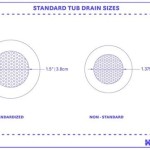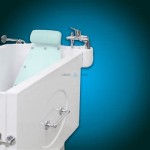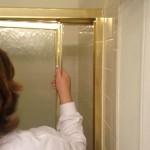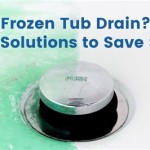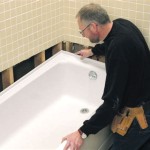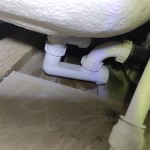How To Remove The Plug From A Bathtub Drain
Bathtub drains, despite their seemingly simple functionality, can become problematic when the plug becomes stuck or requires removal for cleaning or repair. This article provides a comprehensive guide to understanding the various types of bathtub drain plugs, identifying common issues, and detailing the necessary steps for their safe and effective removal. Understanding the mechanism and employing the correct techniques are crucial to avoid damage to the drain, the bathtub itself, or the plumbing system.
Bathtub drain plugs serve the essential purpose of sealing the drain opening to allow the tub to fill with water. Over time, however, they can become clogged with hair, soap scum, and other debris, rendering them ineffective or even stuck. Regularly removing the plug for cleaning and maintenance is a preventative measure that can significantly extend the lifespan of the drain system and prevent more serious plumbing problems.
Before attempting to remove any drain plug, it is essential to identify the type of plug system present in the bathtub. Different types of plugs require different removal methods. Forcing a plug of one type using a method appropriate for another can cause permanent damage and necessitate costly repairs.
Identifying Common Types of Bathtub Drain Plugs
Several types of bathtub drain plugs are commonly found in residential plumbing. Each type operates on a slightly different principle, and the removal process varies accordingly.
Lift-and-Turn Drain: This type of plug features a knob or lever on the top of the plug that, when turned, raises or lowers the plug, sealing or opening the drain. The mechanism typically involves a threaded shaft and a stopper that moves vertically.
Push-and-Pull Drain: Also known as a pop-up drain, this type of plug is operated by pushing down on the plug to seal the drain and pushing again to release it. The internal mechanism usually involves a rocker arm or lever that engages and disengages a stopper.
Toe-Touch Drain: Similar in appearance to the push-and-pull drain, the toe-touch drain is activated by pressing down on the plug with one's toe. This action engages a spring-loaded mechanism that opens and closes the drain.
Trip Lever Drain: This type of drain is controlled by a lever located on the overflow plate, usually near the top of the bathtub. The lever is connected to a linkage that raises and lowers a stopper in the drainpipe.
Stopper Drain (Traditional): This is a simple, removable stopper often made of rubber or metal. It's typically inserted and removed manually, without any attached levers or mechanisms.
Essential Tools and Safety Precautions
Before commencing the removal process, gathering the necessary tools and implementing safety precautions is crucial. Having the right tools on hand will streamline the process and minimize the risk of damage. Prioritizing safety will protect the individual performing the task and prevent potential injuries.
Essential Tools:
- Screwdrivers (Phillips head and flathead)
- Pliers (needle-nose and regular)
- Adjustable wrench
- Drain snake or wire hook
- Gloves
- Clean rags or paper towels
- Small container or bucket
- Safety Glasses
Safety Precautions:
- Wear Gloves: Protect hands from bacteria and sharp objects that may be present in the drain.
- Wear Safety Glasses: Prevent debris from entering the eyes.
- Turn off the water supply: In some cases, turning off the water supply to the bathroom may be necessary to prevent leaks.
- Exercise Caution: Avoid applying excessive force, which can damage the drain or the bathtub.
Step-by-Step Instructions for Removing Different Plug Types
The following section details the specific steps required to remove each of the common bathtub drain plug types. It's essential to carefully follow the instructions for the relevant plug type to ensure a successful and damage-free removal.
Lift-and-Turn Drain Removal:
- Loosen the Knob or Lever: Locate the screw that secures the knob or lever to the plug shaft. Use a screwdriver to loosen the screw (usually counter-clockwise) but do not remove it completely.
- Unscrew the Plug: Once the screw is loosened, carefully unscrew the entire plug assembly from the drain. Turn it counter-clockwise.
- Inspect and Clean: After removing the plug, inspect it for debris, hair, and soap scum. Clean the plug thoroughly using a brush and a cleaning solution. Also, check the drain opening for obstructions.
- Reassemble (if necessary): If the plug is being reinstalled, ensure all threads are clean and lubricated before screwing it back into the drain. Tighten the set screw.
Push-and-Pull Drain Removal:
- Locate the Set Screw (if any): Some push-and-pull drains have a small set screw located on the side of the stopper. If present, loosen the set screw with a small Allen wrench or jeweler's screwdriver.
- Grip the Stopper: Firmly grip the stopper with pliers or by hand.
- Pull Upwards: Carefully pull the stopper straight up and out of the drain. It may require some force, but avoid excessive pulling that could damage the drainpipe. A slight twisting motion may help.
- Inspect and Clean: Clean the stopper and the drain opening, removing any debris.
- Reassemble (if necessary): To reinstall, align the stopper with the drain opening and push it down until it clicks into place. Tighten the set screw if one was present.
Toe-Touch Drain Removal:
- Grip the Stopper: The process is generally the same as the push-and-pull drain. Firmly grip the stopper with pliers. Protecting the finish of the stopper with a cloth is advised to prevent damage from the pliers.
- Pull Upwards: Carefully pull the stopper straight up and out of the drain. It may require some force, but avoid excessive pulling that could damage the drainpipe. A slight twisting motion may help.
- Inspect and Clean: Clean the stopper and the drain opening, removing any debris.
- Reassemble (if necessary): To reinstall, align the stopper with the drain opening and push it down.
Trip Lever Drain Removal:
- Remove the Overflow Plate: Locate the overflow plate on the bathtub wall near the drain lever. Remove the screws securing the plate.
- Pull Out the Linkage: Once the plate is removed, carefully pull out the linkage mechanism connected to the lever. This linkage will include the stopper.
- Detach the Stopper: The stopper may be attached to the linkage with a screw or a clip. Detach the stopper from the linkage.
- Inspect and Clean: Clean the stopper, the linkage, and the drain opening, removing any debris.
- Reassemble (if necessary): Reattach the stopper to the linkage, insert the linkage back into the drainpipe, and secure the overflow plate with screws. Ensure the lever operates smoothly.
Stopper Drain (Traditional) Removal:
- Grip the Stopper: Firmly grip the stopper. This might be facilitated using pliers if the stopper is slippery or difficult to grasp.
- Pull Upwards: Carefully pull the stopper straight up and out of the drain. This type is usually straightforward, but resistance may occur if debris is present.
- Inspect and Clean: Clean the stopper and the drain opening, removing any debris.
- Reassemble (if necessary): To reinstall, simply align the stopper with the drain opening and push it down.
If the plug is stuck, avoid using excessive force. Instead, try using a drain snake or wire hook to dislodge any debris that may be causing the obstruction. Gently work the snake or hook around the plug to loosen any trapped hair or soap scum.
If the plug remains stuck after attempting these methods, it may be necessary to consult a professional plumber. Attempting more aggressive removal techniques could potentially damage the drainpipe or the bathtub.
Regular maintenance, including periodic cleaning of the drain and plug, can prevent future issues with stuck plugs. Using a drain strainer can also help to catch hair and other debris before they enter the drainpipe.
Proper knowledge of different drain types and adherence to careful removal techniques are key to avoiding damage and ensuring the longevity of the bathtub plumbing system. Utilizing the steps above provides a framework for removing a variety of drain plugs with confidence and minimizing the need for professional plumbing assistance.

How To Easily Remove Bathtub Drain Plug Stopper Unclog In 1 Minute Jonny Diy

So Easy How To Remove A Watco Pop Up Drain Plug
:max_bytes(150000):strip_icc()/remove-tub-stopper-clear-a-drain-2718786-06-b651d62bfb29494a824821126579e750.jpg?strip=all)
How To Remove 6 Diffe Kinds Of Drain Stoppers
:max_bytes(150000):strip_icc()/remove-tub-stopper-clear-a-drain-2718786-hero-425b2598739f43718b6905767d2616d8.jpg?strip=all)
How To Remove 6 Diffe Kinds Of Drain Stoppers

How To Remove A Bathtub Drain The Home Depot

Remove A Bathtub Drain Stopper To Unclog The Quick Easy

How To Remove A Bathtub Drain Stopper Mr Rooter

How To Remove A Pop Up Tub Drain Plug Stopper Easy No Tools Needed

4 Easy Ways To Remove A Tub Drain Stopper Wikihow
:max_bytes(150000):strip_icc()/remove-tub-stopper-clear-a-drain-2718786-10-f41384e70a744fd19641d85235f1f5c3.jpg?strip=all)
How To Remove 6 Diffe Kinds Of Drain Stoppers


